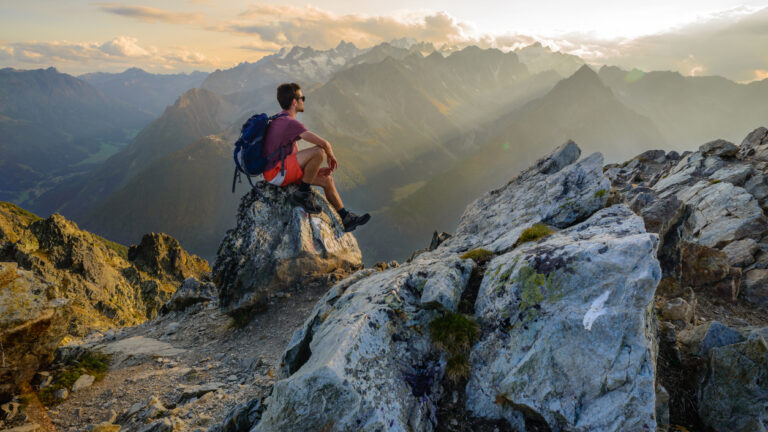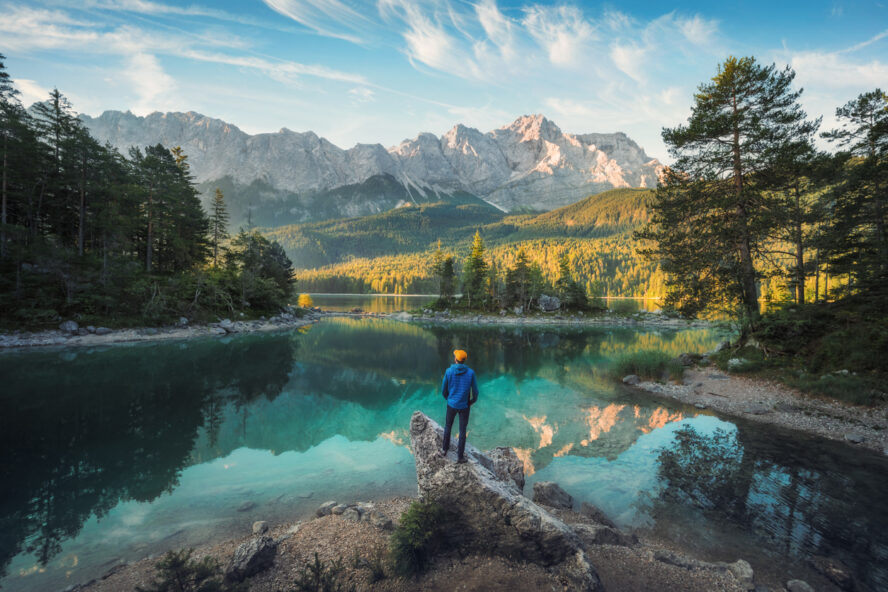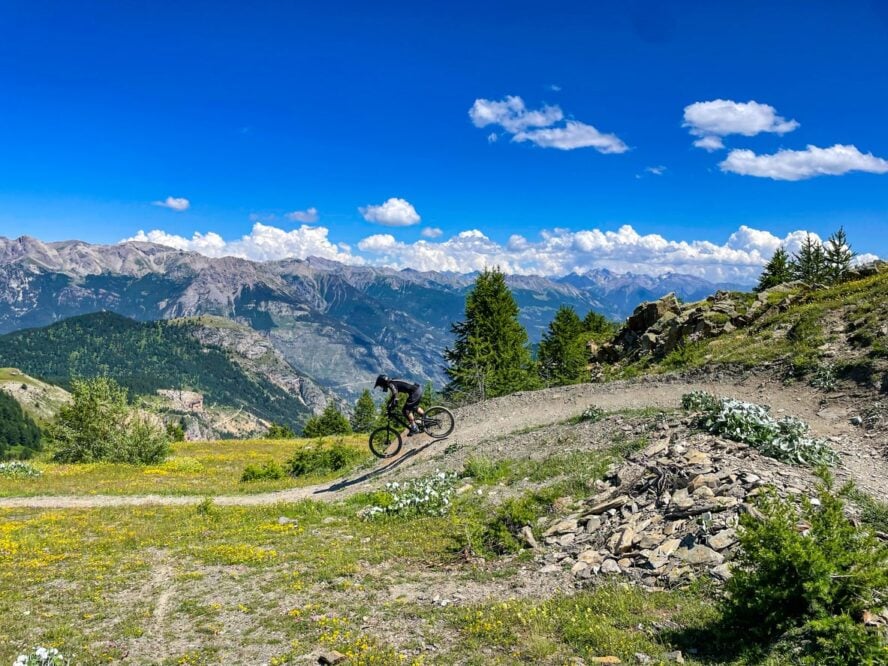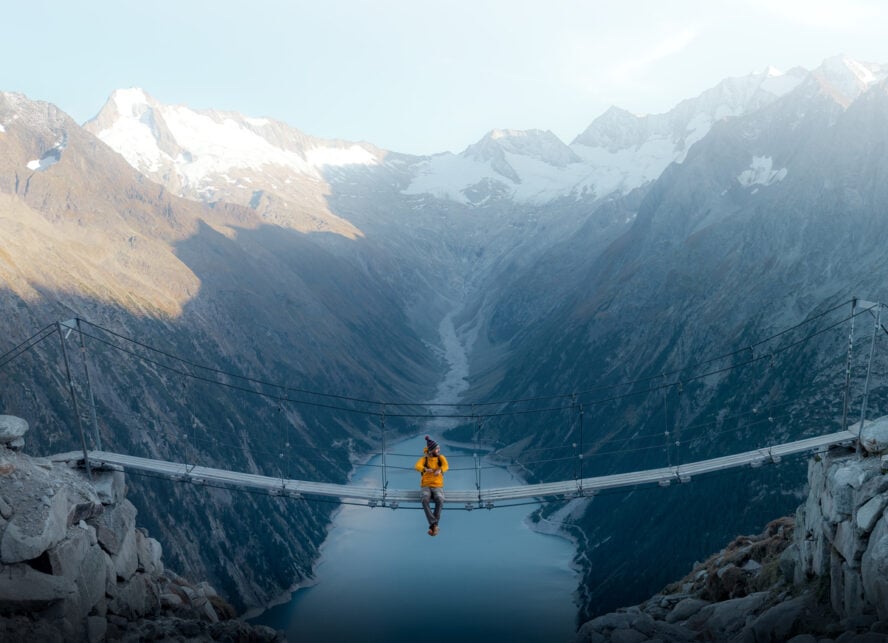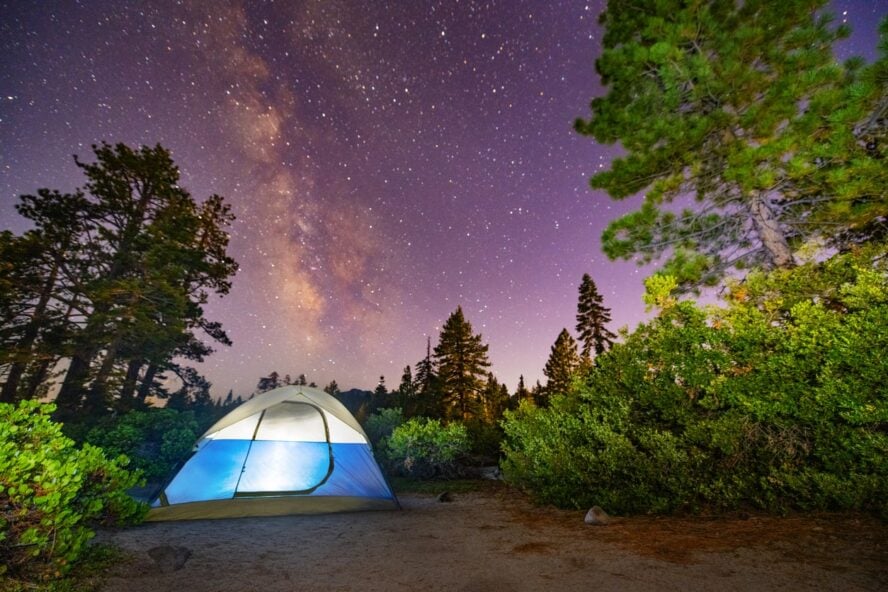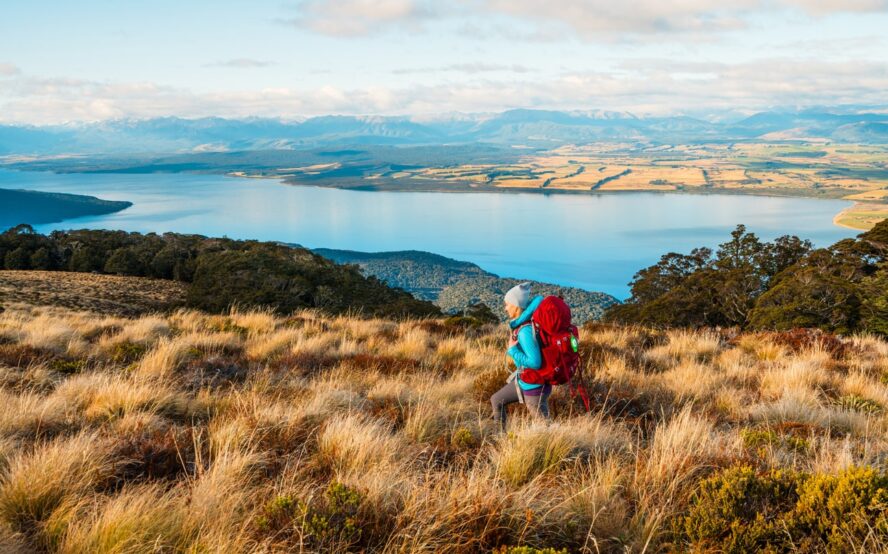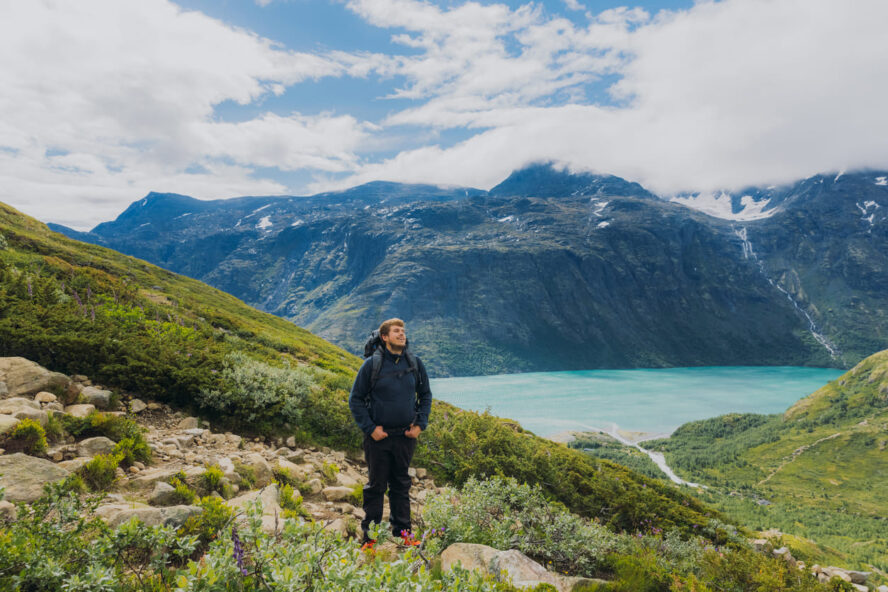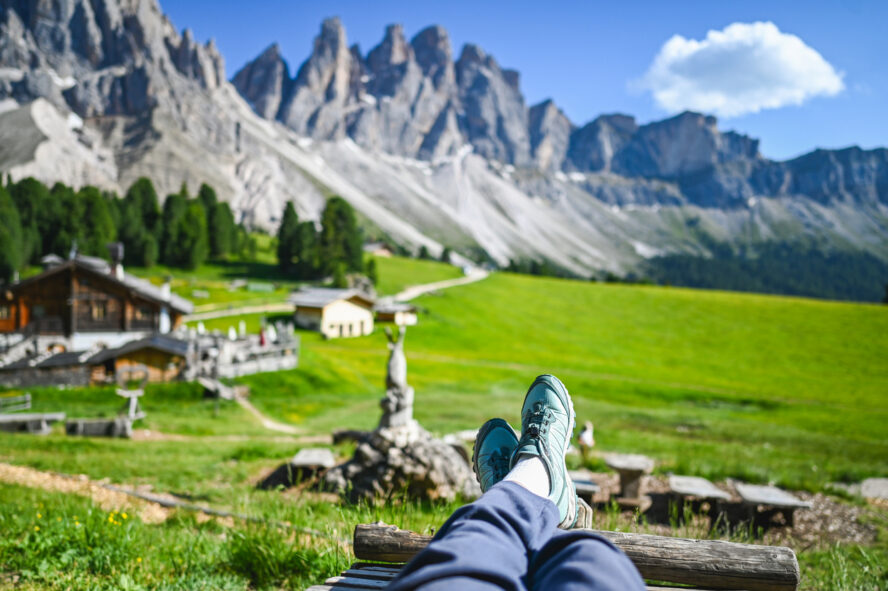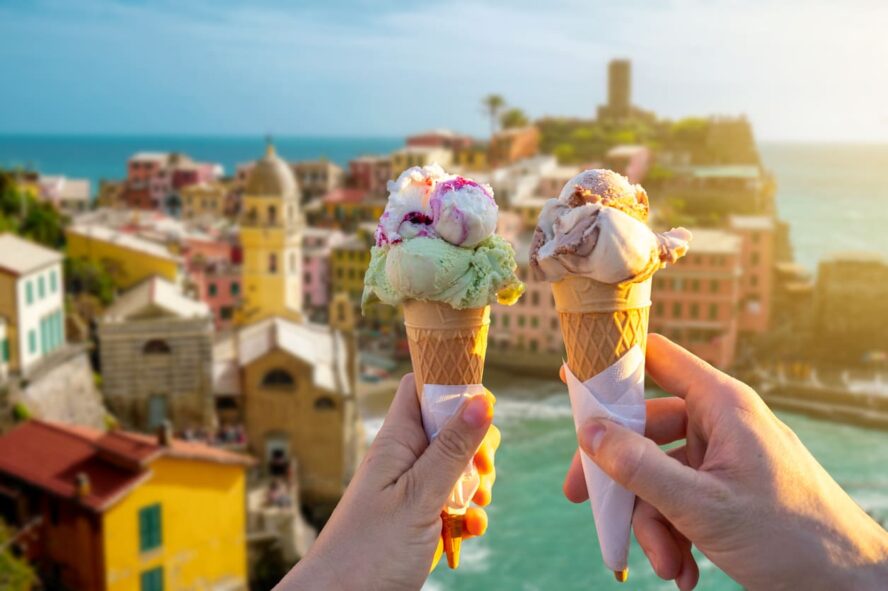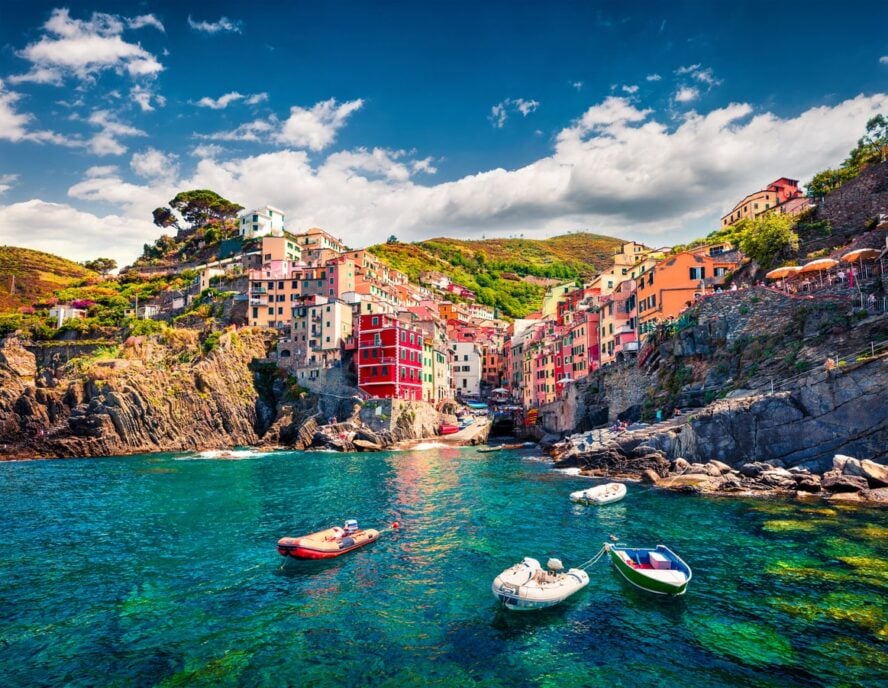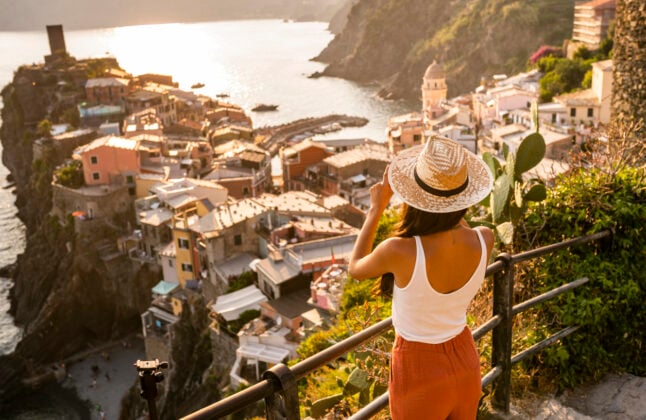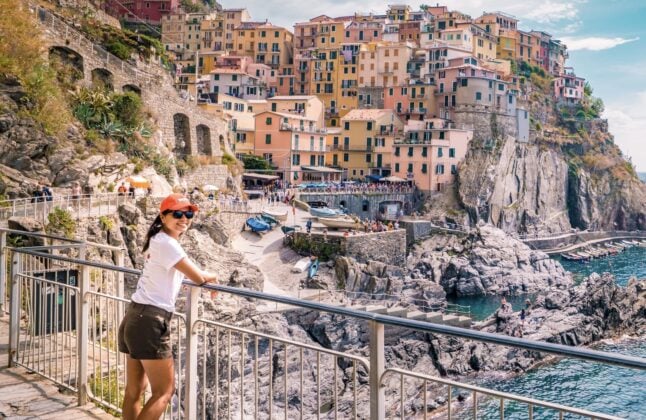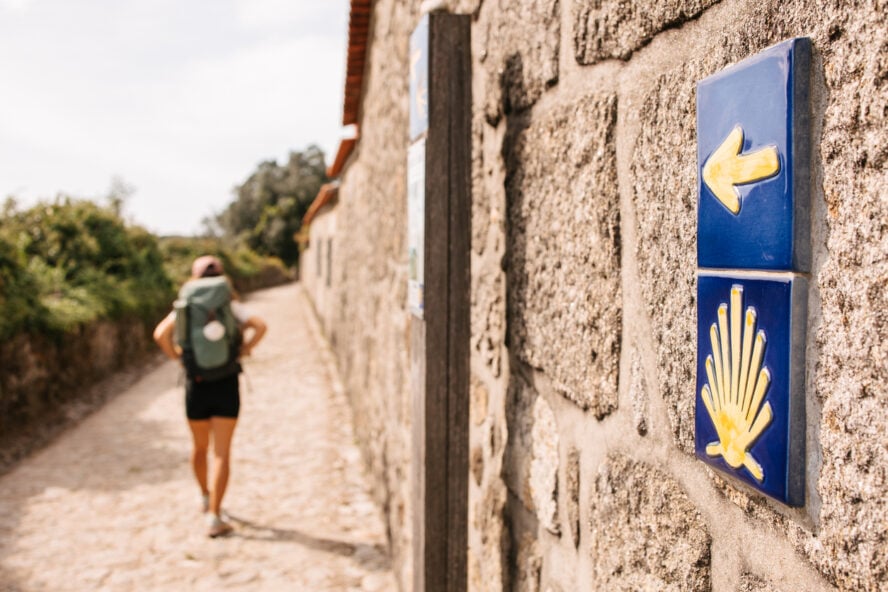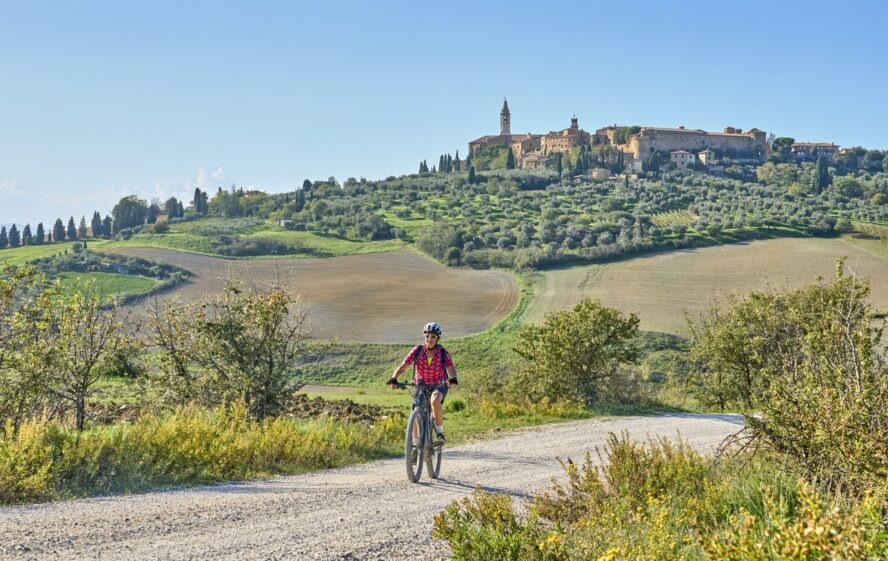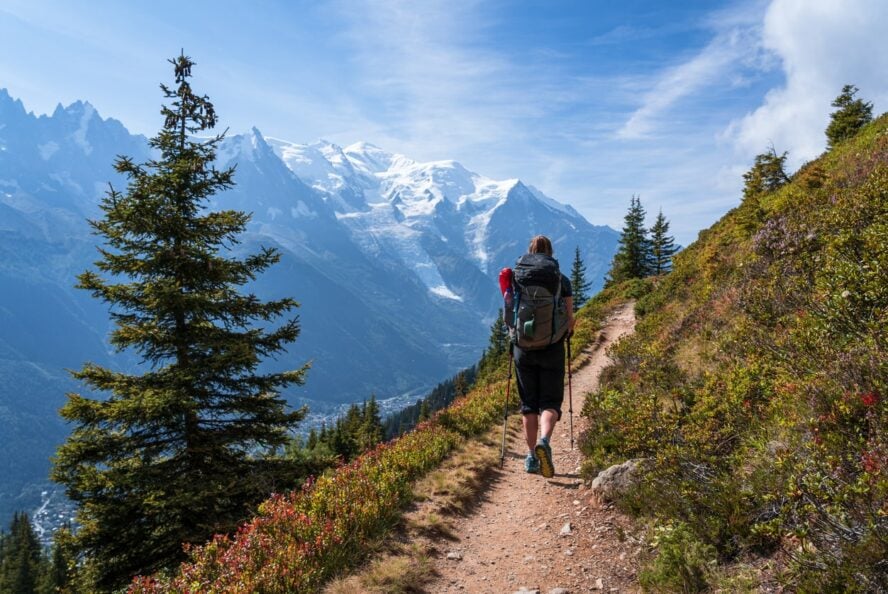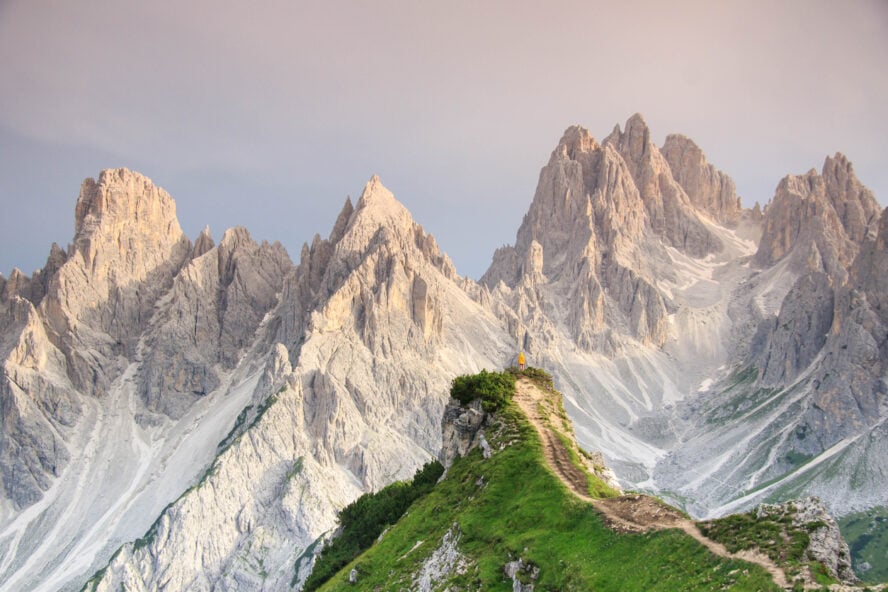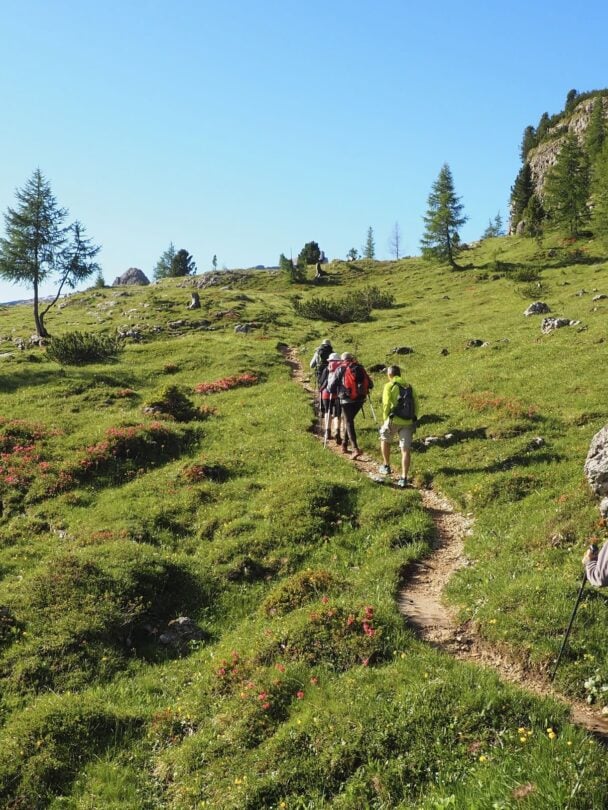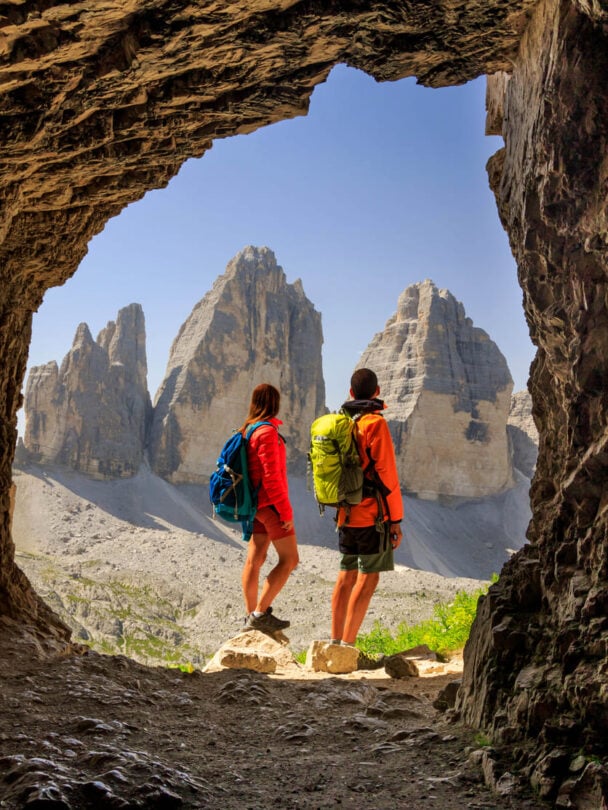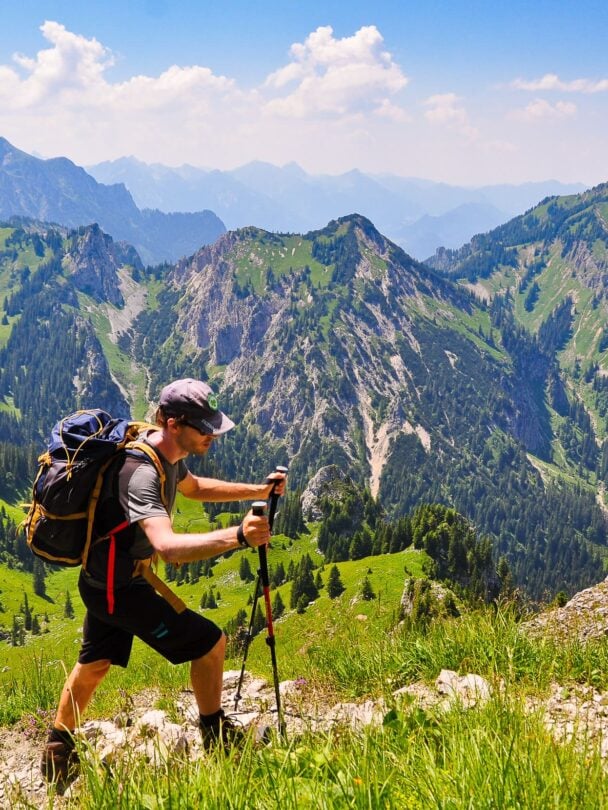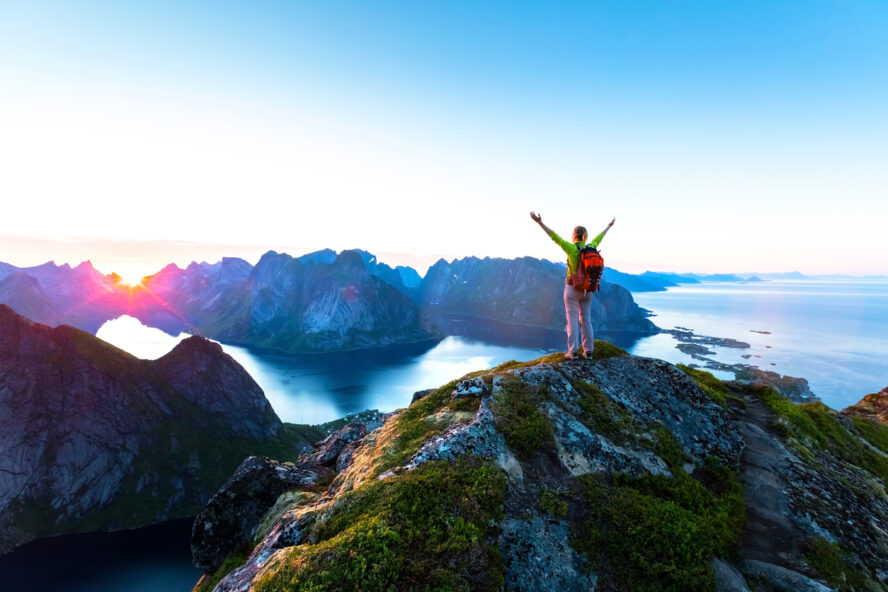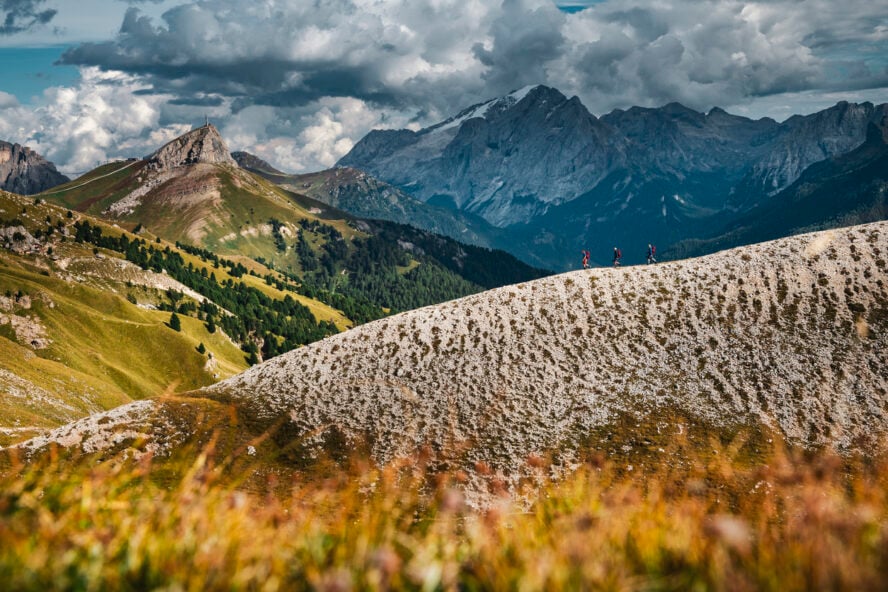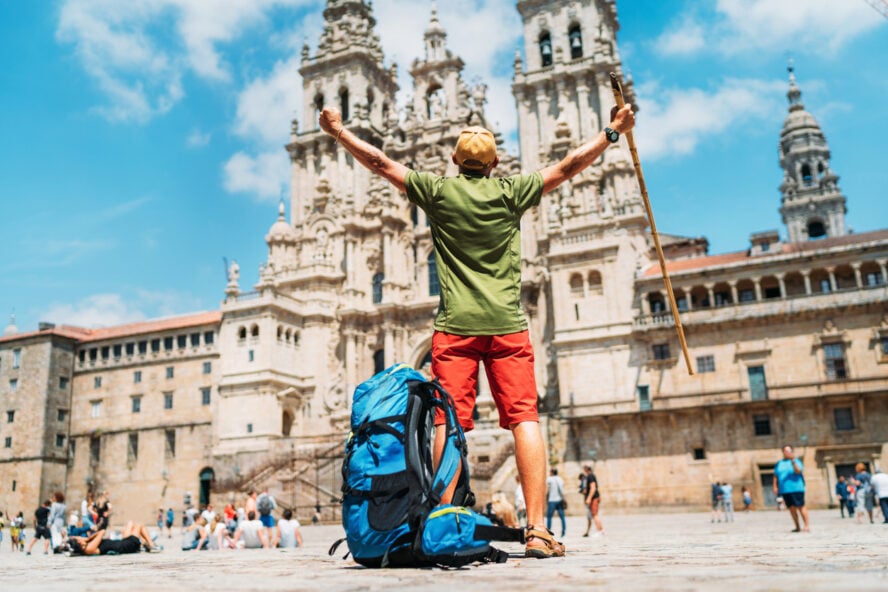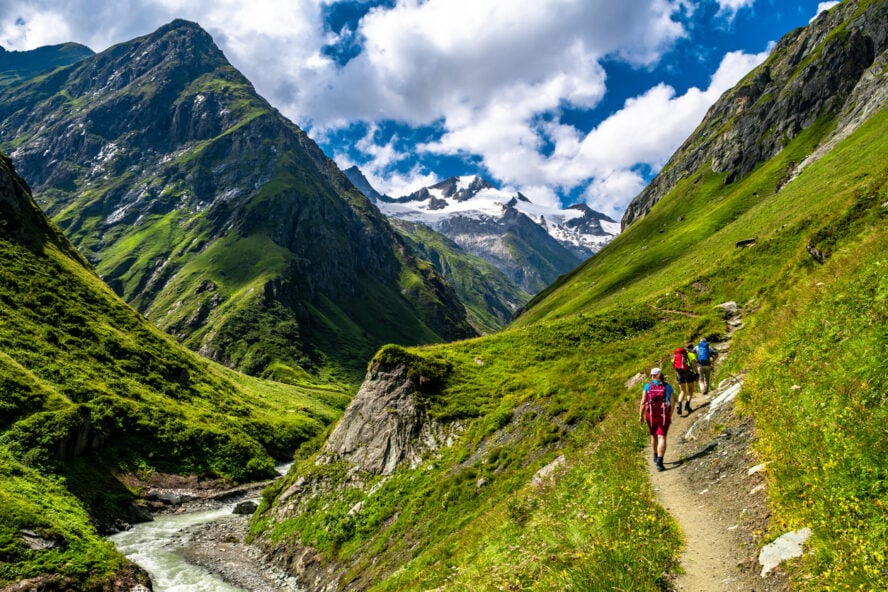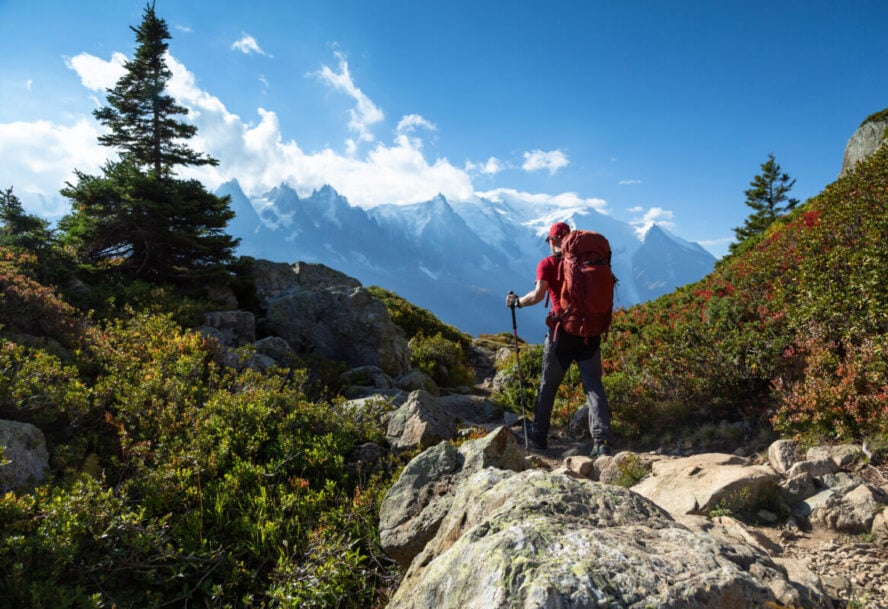Imagine trekking through Italy’s colorful coastal villages, the Mediterranean breeze on your face, stopping whenever you want for a sunset gelato without a schedule dictating your every move.
Or wandering Spain’s ancient trails at your own rhythm, pausing to chat with locals or reflect in a quiet meadow, free from group pressure.
That’s what a self-guided tour is. An adventure where you call the shots.
This guide dives into what self-guided touring means, why it’s surging in popularity, how it stacks up against guided trips, and the best spots to try it.
Let’s explore how going guide-free could unlock a whole new dimension of adventure travel for you.
What Is a Self-Guided Tour, Anyway?
A self-guided tour puts you in the driver’s seat of your adventure.
You follow a pre-planned route, but without a guide leading the way. You get maps, itineraries, and bookings sorted in advance, then explore at your own pace.
It’s like a choose-your-own-adventure book, but in real life. Hiking trails, cycling paths, or wandering historic sites without someone dictating the schedule.
This style suits independent travelers who want flexibility. You decide when to start your day, how long to linger at a viewpoint, or if you want an extra coffee break.
Accommodations and logistics often come pre-arranged, so you avoid the hassle of last-minute bookings. It’s empowering, as it lets you connect deeper with the landscape and your own rhythm.
What Is Making More and More People Choose a Self-Guided Tour
Self-guided tours are booming, and the market is expected to grow three times by 2031. For many, this is because they offer freedom in a world of packed schedules.
More and more people want to escape rigid group itineraries and travel on their terms, whether it means slowing down for photos or pushing ahead for a challenge. Plus, the rising costs of guided trips are pushing budget-conscious adventurers toward self-guided options. You can save without sacrificing quality.
Social media fuels the trend, too. Seeing friends conquer trails solo inspires others to try it.
The pandemic shifted preferences too; many people prefer smaller, independent bubbles with family or friends over large groups. The influx of assisted self-guided tours, with pre-booked logistics, make it accessible for beginners.
We saw this surge firsthand at 57hours. More and more clients are requesting authentic, personalized experiences that fit their lives.
Should I Choose a Guided or a Self-Guided Trip
Don’t know which way to go? It all boils down to your style. Let’s break down the key differences.
1) Planning and logistics
Self-guided tours demand more upfront planning. You map routes, book stays, and arrange transport. It takes time and research.
Guided trips hand this off to experts. They sort everything.
However, assisted self-guided tours bridge the gap. Providers like us at 57hours offer assisted self-guided tours where we pre-arrange maps, meals, accommodations, luggage transfers, and more, depending on the trip. You just show up and enjoy the adventure.
It’s guide-free but hassle-free, and lets you focus on the adventure without logistical headaches.
2) Flexibility
Self-guided shines in flexibility. You set your start time, detour for a view, or extend a lunch break. No waiting for the group.
Guided trips offer some flex, depending on the guide and the adventure, but you’re expected to adapt to other people’s paces. Plus, weather changes might force group decisions.
Assisted self-guided keeps that independence while providing structured support, like optional shortcuts or rest days. It’s ideal if you want control without total isolation.
3) The Social Experience
Guided trips are perfect for folks who want to meet strangers. You share laughs and stories with fellow travelers and often leave the trip with long-term friendships.
However, this also means compromising. Slower hikers might hold you back, and group dynamics could lead to clashes and, by extension, a negative experience on the trip.
Self-guided lets you go solo or with your own crew of friends and family. No strangers, just intimate connections. It’s perfect for introverts or those wanting quality time with loved ones. Yes, there’s less built-in camaraderie, but you can meet locals or other independents along the way.
4) Cost
Self-guided trips save money.
No guide fees mean lower overall costs, often 30-50% less than guided. You control the expenses on food and extras. Guided trips cost more because you’re paying for the guide’s expertise and convenience.
Assisted self-guided trips strike a balance. They are affordable, like self-guided trips, but with added perks like pre-booked transfers.
5) Safety
For most people, guided trips feel safer.
You’ll always have an expert by your side to spot risks, handle emergencies, and know first aid. This is why guided trips are ideal for trickier adventures or beginners.
Self-guided requires an extra level of confidence. You’re on your own for navigation and any issues that may come up.
Assisted self-guided means extra safety nets, like emergency contacts, support vehicles, and detailed briefs. If you’re unsure about whether you’re ready for a trip, start guided, then transition.
Is a Self-Guided Tour Really for Me?
A self-guided trip is ideal if you’re confident, independent, and enjoy traveling on your own terms.
It suits people who like to plan or follow a flexible itinerary without being tied to a group schedule. You set your own pace.
From our experience, self-guided trips work well for solo travelers craving freedom, couples seeking a romantic getaway, or families who want to tailor each day to everyone’s energy and interests. These folks gain a sense of adventure and personal achievement, and get to discover places on their terms.
However, if you feel uncertain about navigation, managing logistics, or handling unexpected challenges, a guided trip might be a better starting point. A guide will help you build confidence, gain skills, and learn the ropes before going fully independent.
Assisted self-guided trips are also fantastic for first-timers, because a pro will take care of accommodations and key logistics so you can focus entirely on enjoying the journey. These trips are a perfect bridge between guided and fully independent travel.
What Do I Need to Know Before My First Self-Guided Tour?
Your first self-guided tour is an exciting and daunting experience. But don’t worry! We’ll help you prep well for smooth sailing. Here’s what to focus on.
Route Planning
Planning your route is where the self-guided adventure starts to take shape. It’s like sketching out a treasure map for your trip.
First, pick a trail that matches your fitness and mood. If you’re new to hiking, go for something forgiving. The key here is knowing your limits. Don’t bite off a 30-day thru-hike with 1,500m of daily gain if you’re not ready.
Dive into research to nail your choice. Apps like Komoot, AllTrails, or Gaia GPS are your best friends here. They’ve got detailed maps, elevation profiles, and recent hiker reviews that will let you in on current trail conditions. Komoot’s great for customizing routes, so you can tweak distances or avoid sketchy sections. AllTrails has user photos, so you can see if that “easy” path is actually a rocky scramble.
Check forums like Reddit’s r/Hiking for real-time tips from folks who’ve been there. Guidebooks add context on landmarks, water sources, and bailout points. Crucial if you need to cut a day short.
Map out specifics: daily distances, elevation gains, and key stops. Note landmarks, like the yellow arrows on the Camino or red-white markers in the Alps, to keep you oriented.
Elevation matters. A flat 15km feels way different than 15km with a 1,000m climb. Most apps will shor this, but cross-check with topo maps for accuracy.
Weather is a big player. Check seasonal patterns. If you’re hiking in June, pack for rain; in August, prep for heat.
When you’re going guide-free, backup plans are non-negotiable. Batteries die, fog rolls in, a twisted ankle might force you to make a detour. Print paper maps or grab a guidebook with offline routes and alternate paths. Finally, mark bailout points, like villages with bus stops or hostels, in case you need to bail.
Timing & Pacing
Pick the Right Season
Summer is the obvious choice for long daylight hours, fully open trails, and warmer temperatures. However, it also comes with larger crowds, especially on popular routes like the Tour du Mont Blanc.
Shoulder months mean quieter trails, crisp air, and sometimes even the magic of snow-dusted peaks or early autumn foliage. Winter and early spring are more technical, with shorter days and icy conditions.
Set a Realistic Daily Pace
Avoid the temptation to rush through long distances, especially if you’re new to multi-day adventure tours.
A 20 km day might be feasible for experienced hikers on flat terrain, but on alpine trails with elevation changes, carrying a full pack, it can be grueling. Plan shorter days early on to build stamina. Allow your body to adapt to both distance and altitude.
Pro tip: Follow the “two-thirds rule”: aim to complete two-thirds of the planned distance by midday. By doing this, you’ll leave yourself room for breaks, slower sections, or spontaneous detours to viewpoints.
Build in Rest and Recovery
Rest days or half-days are crucial.
Even a single morning spent lounging at a hut, enjoying local food, or soaking in a hot spring can rejuvenate your energy and prevent fatigue-related injuries. Most tours structure daily breaks, guided stretches, and meal times to optimize recovery. Make sure to use these pauses intentionally, not just for photos or social media.
Track Progress & Adjust as Needed
Pay attention to your body. If your knees ache or your legs feel heavy, adjust your pace, shorten your day, or redistribute weight in your pack. Experienced guides often encourage “listening to your trail”: using both instinct and structured check-ins to prevent overexertion.
Accommodation & Logistics
Getting accommodation and logistics right can make or break your self-guided trip.
Book Early for Popular Routes
On sought-after trails like the Alta Via 1 or the Laugavegur Trail in Iceland, huts, hostels, and small inns fill quickly, sometimes months in advance. Even in shoulder seasons, prime spots are limited. Booking early gives you the best choice of beds, views, and room types.
Mix Accommodation Types for Variety
Don’t stick to just one style.
Combining camping, mountain huts, hostels, and small inns is a much richer experience. Sleep under the stars one night, enjoy a hearty hut meal the next, and rest in a cozy inn on a cold evening. This approach will add variety, help you pace your journey better, and give you options if the weather forces changes.
Arrange Transport to Trailheads
Reaching remote trailheads often requires a combination of trains, buses, or private shuttles.
Popular alpine hikes may start in villages accessible only via regional trains or mountain roads. In Iceland, many highland trails require 4×4 or super jeep access. Memorize the departure times and frequency to minimize first-day stress.
Understand Check-In and Check-Out Times
Many mountain huts and hostels often have strict check-in and check-out times. Arriving too early may leave you waiting in the cold; arriving too late could mean missing meals or losing your reservation. Keep these windows in mind when planning daily distances and make sure you reach your overnight stop in time.
Backup Plans & Flexibility
Mother Nature loves to throw a curveball. Weather, trail conditions, or fatigue could disrupt your plans. Always have backup accommodation options and alternative transport routes. For remote locations, keep a list of nearby refugios, guesthouses, or campgrounds.
Food & Water
Fueling your body properly is one of the most important aspects of a successful multi-day trek. Energy levels, endurance, and even safety depend on having enough calories, hydration, and nutrition at the right times.
Plan Your Meals Ahead
Before hitting the trail, plan what you’ll eat each day. Don’t skip meals; consider breakfast, lunch, snacks, and dinner, along with some optional treats for morale boosts. You’ll need them.
Your meals should provide a balance of all the macronutrients: carbohydrates for energy, protein for recovery, and fats for long-term fuel.
Hydration: Water Sources & Safety
Water is just as critical as food. Thankfully, many trails have streams, rivers, or natural springs along the way.
Always treat water before drinking using portable water filters, purification tablets, or boiling if possible. Also, check local guidance. Some streams may carry bacteria or glacial silt that requires filtration. Carry a backup water source in case natural supplies run low.
Local Eateries & Resupply Points
Knowing where to resupply along the route is invaluable, especially for longer trails. Many mountain villages, towns, and trailheads have cafés, grocery stores, or bakeries. Plan well, and you’ll be able to stock up on fresh water and snacks, break up long hiking days, and maybe even try a local delicacy or two.
Safety & Navigation Skills
Hiking and cycling in remote or alpine areas can be incredibly rewarding, but it also comes with plenty of risks.
Basic Navigation Skills
At a minimum, you should learn how to:
-
Read topographic maps: Understand elevation, contour lines, and landmarks.
-
Use a compass: Practice taking bearings and orienting your map to terrain.
-
Operate GPS devices: Download offline maps and track your route.
Take a Navigation Course
If you’re new to backcountry navigation, consider a short course. A good course will teach you route planning and wayfinding, reading trail markers and natural landmarks, and emergency navigation techniques. Even if you’re an experienced adventurer, you could benefit from a refresher course.
Know Emergency Numbers & Procedures
Before leaving, record local emergency numbers. For example, in Europe, 112 is the universal emergency line. Keep a list of the nearest hospitals or ranger stations along your route.
Monitor Weather Closely
The weather can change rapidly in the mountains or coastal regions. Use reliable weather apps with real-time updates. Follow local forecasts at huts or visitor centers, and master fundamental observational skills: clouds, wind patterns, and temperature changes
Plan contingency routes or shelters in case of storms. Avoid high ridges or exposed areas when thunderstorms, strong winds, or blizzards are forecast.
Communicate Your Plan
Always let someone know your intended route, daily distances, and estimated finish times. This can be a friend or family member, local hut staff, or your tour guide or agency.
What Is a Good Destination for My First Self-Guided Tour?
For your first self-guided tour, it’s best to pick a destination with good infrastructure, well-marked trails, and supportive local services. Here are some top picks for beginners and first-timers:
Cinque Terre
Italy is the world’s most popular self-guided destination, and Cinque Terre’s coastal paths are perfect for beginners.
You can wander cliffside trails linking the five colorful villages—Riomaggiore, Manarola, Vernazza, Corniglia, and Monterosso—while enjoying breathtaking views of the Ligurian Sea. Sunset strolls with a gelato in hand feel magical.
The trails are well-marked, totaling about 12km, and trains are available if you want to skip a segment. Spring and fall are ideal times to avoid peak crowds.
Camino de Santiago
The Camino de Santiago is a legendary pilgrimage route, and a common choice for many first-timers. While the full trail stretches 800km, shorter sections, such as the final 100 km of the Camino Frances, are manageable and beginner-friendly.
Infrastructure along the Camino is excellent: albergues (hostels), cafes, and restaurants line the path, and the iconic yellow arrows will guide your way. The Camino is socialm yet flexible. You can meet fellow pilgrims or choose a quieter pace.
Spring and fall have the best weather, and assisted self-guided options can take care of lodging and logistics.
Tuscany
Tuscany’s rolling hills are the perfect combo of cycling and hiking for a first self-guided adventure.
You’ll explore vineyards, olive groves, and medieval towns like Siena and San Gimignano, stopping for wine tastings and local delicacies along the way. Trails are generally gentle, which makes it accessible for most fitness levels, and farm stays provide comfortable resting points.
In the spring the landscapes are in full bloom, while fall offers the colorful harvest season.
The French Alps
Europe’s most famous alpine circuit, the Tour du Mont Blanc, is ideal for self-guided hikers seeking epic scenery.
The 170km trail circles Mont Blanc through France, Italy, and Switzerland, with well-marked paths and lodges or refuges every few hours. Luggage transfer services make multi-day trekking easier, so you can enjoy the alpine views without heavy packs.
While the route is challenging (10,000m of ascent!) you’ll get awe-inspiring landscapes and a real sense of achievement.
The Dolomites
The Dolomites offer dramatic mountain scenery for self-guided hikers looking for adventure.
Classic routes like the Alta Via trails wind through jagged limestone spires, past turquoise alpine lakes, and across some exposed via ferrata sections. It’s more demanding than other destinations, but the views of peaks such as Marmolada and Tre Cime di Lavaredo make it unforgettable.
Cozy refugios along the way will provide comfort at the end of each day.
What Is a Self-Guided Tour? It’s Freedom!
So what is a self-guided tour?
It’s freedom. It’s flexibility. The kind of feeling you won’t get with a guide.
Going guide-free lets you craft your pace. Start with assisted options to ease in, then embrace independence. This style saves money and builds skills, turning trips into personal triumphs.

